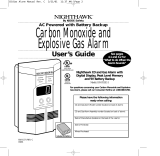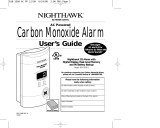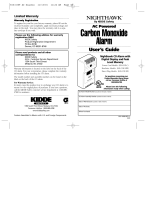
If after following Steps 1 – 5, the alarm reactivates within a 24-hour period, repeat Steps
1 – 5, and call a qualied appliance technician to investigate the structure for sources of
carbon monoxide, and verify that the alarm system is functioning properly. Any prob-
lems should be immediately corrected.
Verify that motor vehicles are not, or have not been, running in an attached garage or
adjacent to the residence.
For more information about your specic alarm, refer to your user’s manual.
Peak level memory and test buttons on your carbon monoxide alarm
How to Use the Test Button
Any time you push the Test/Reset button, the alarm will go through a series of test
numbers that are programmed into the unit to test the internal diagnostics. This will
start with an 888 reading, then display numbers usually in the 200 range, then back to
888, and lastly to zero. These are not actual readings, so you don't have to be alarmed or
take action.
What Is Peak Level?
The Peak Level reading is just a memory. At one point, the unit was exposed to some-
thing that caused the reading. It could have been a substance that was sprayed too close
to the unit, paint fumes, or actual carbon monoxide that caused the reading.
To reset the peak level memory, push the Peak Level button and hold it down while you
press and hold the Test/Reset button for 2 seconds, then release them at the same time.
After this, monitor the unit for a few days to determine if this is a recurring problem or if
it was an old reading. If you don't get a reading, then you know it could have just been
a random reading and you have no other event taking place. If a reading does come
back, reset the peak level again and start watching it every one to two hours to try to
narrow down when the reading is happening and be aware of what's going on around
you (heat coming on or off, cleaning, etc.) to determine the source of the reading.
Carbon Monoxide Troubleshooting/FAQ Guide







